Electronically Commutated Motors (ECMs) have gained significant popularity due to their energy efficiency and advanced control capabilities. These motors utilize advanced electronic control systems to regulate speed, torque, and other parameters, making them highly adaptable to varying load requirements.
When it comes to understanding the inner workings of ECM motors, one common question arises: Do ECM motors have capacitors? In this article, we will delve into the topic and explore the presence or absence of capacitors in ECM motors, shedding light on their design, functionality, and the role capacitors play, or don’t play, in their operation.
What Is an ECM Motor?
Unlike traditional motors, which rely on AC power and mechanical commutation, ECM motors utilize a built-in inverter and permanent magnets to control the speed and torque with exceptional accuracy [1].
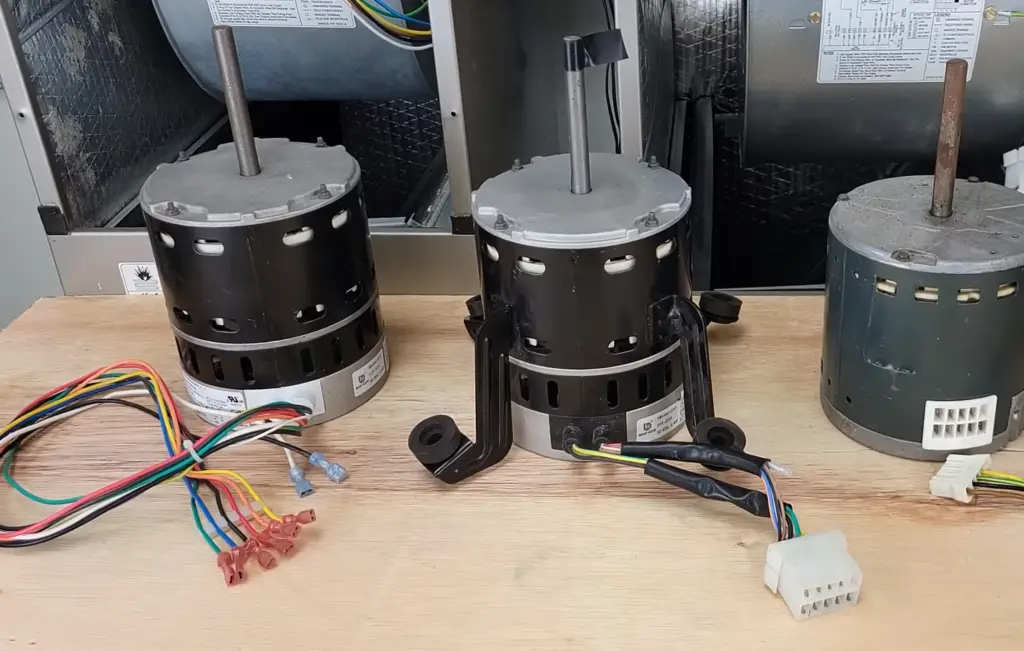
ECM motors are renowned for their impressive energy efficiency. By leveraging advanced control algorithms, ECM motors adjust their speed and power consumption based on the actual load requirements. This intelligent regulation ensures that the motor operates at optimal levels, minimizing energy waste. Compared to standard motors, ECM motors can reduce energy consumption by up to 50%, resulting in substantial cost savings over time.
ECM motors find applications across various industries and sectors. They are commonly used in HVAC (Heating, Ventilation, and Air Conditioning) systems, where they enhance efficiency and provide precise airflow control. ECM motors also play a vital role in appliances such as refrigerators, washing machines, and fans, offering quiet operation and better performance. Additionally, ECM motors are employed in automotive cooling systems, industrial equipment, and even renewable energy systems like wind turbines.
Apart from their energy-saving attributes, ECM motors offer several additional benefits. These motors operate quietly, generate less heat, and have a longer lifespan compared to traditional motors. The precise speed control capabilities enable improved comfort, reduced noise levels, and better air quality in HVAC systems. Furthermore, ECM motors contribute to a greener environment by minimizing carbon emissions.
Use of ECM Motor:
1) HVAC Systems
One of the most common applications of ECM motors is in HVAC systems. ECM motors provide precise airflow control, enabling better temperature regulation and improved energy efficiency. These motors can adjust their speed and power consumption based on the specific requirements, resulting in optimized HVAC performance. ECM motors also contribute to reduced noise levels, enhanced air quality, and longer equipment lifespan, making them ideal for both residential and commercial heating and cooling systems.
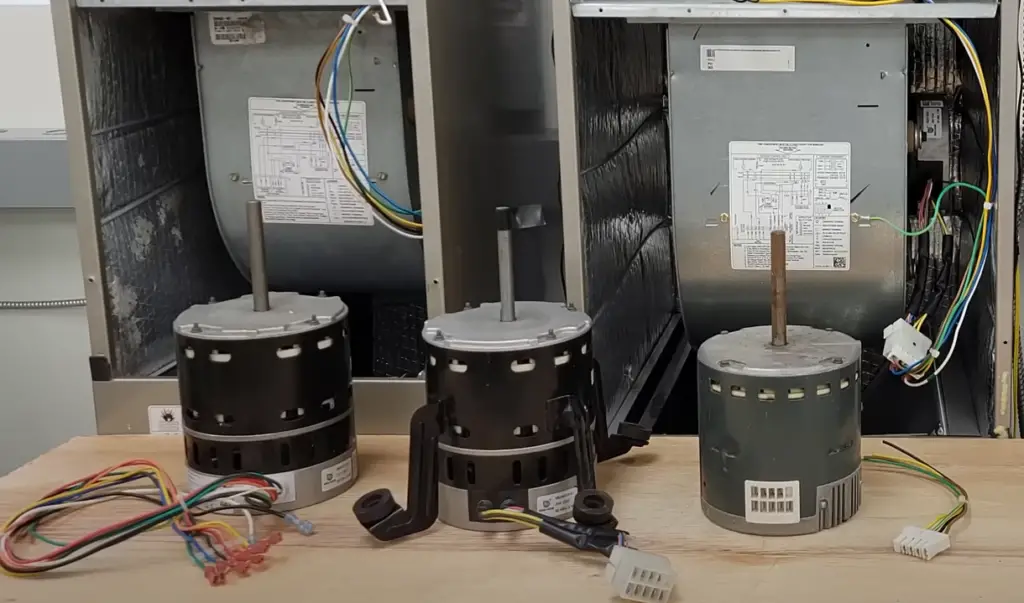
2) Appliances
ECM motors are widely used in various household appliances. In refrigerators, ECM motors help regulate temperature and ensure consistent cooling, leading to energy savings and improved food preservation. In washing machines, ECM motors offer variable speed control, allowing for customized washing cycles and reducing water and energy consumption. Additionally, ECM motors are employed in fans and ventilation systems, providing quiet and efficient operation while maintaining indoor air quality.
3) Automotive Industry
ECM motors have made their way into the automotive industry, particularly in cooling systems. These motors offer precise control over fan speed, allowing efficient temperature regulation in the engine compartment. By adjusting the fan speed based on engine requirements, ECM motors help optimize fuel efficiency and reduce emissions. Moreover, the reliability and durability of ECM motors make them ideal for electric and hybrid vehicles, where energy efficiency is of paramount importance.
4) Industrial and Renewable Energy Applications
ECM motors find extensive use in industrial equipment, such as pumps, compressors, and conveyors. Their energy efficiency, low heat generation, and precise control enable optimal performance and reduce operating costs. Furthermore, ECM motors are utilized in renewable energy systems like wind turbines, where their ability to adapt to changing wind conditions improves overall power generation efficiency.
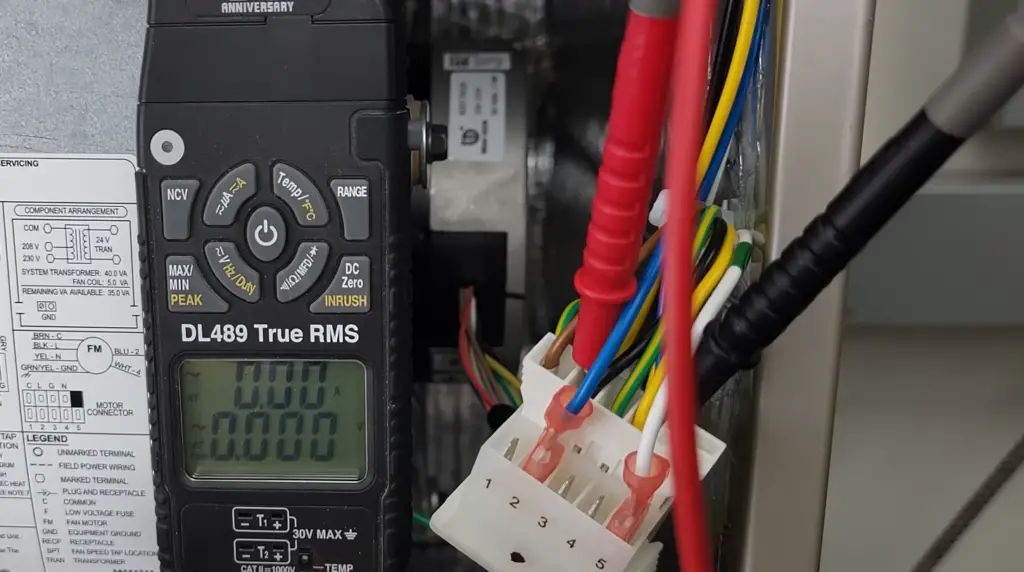
How Does an ECM Motor Work?
The ECM motor functions by energizing a series of electromagnets inside the motor’s stator. The artificial intelligence system of an ECM motor contains a microprocessor, which is the key component of what makes them able to provide higher efficiency.
When there is a change in torque, the microprocessor senses it and automatically increases the speed of the motor. This increase in speed creates more airflow to make sure that CFM is maintained at the programmed level.
In addition, ECM control converts AC single-phase power to DC power and then pulses that DC voltage appropriately to the three-phase motor. ECM motors are more efficient and use less energy than traditional motors.
Types Of Electronically Commutated Motors (ECM):
Constant Airflow ECMs
Constant Airflow ECMs are specifically designed for applications that require a consistent airflow regardless of changes in system resistance. These motors are commonly used in HVAC systems where maintaining a constant airflow is essential for optimal performance. Constant Airflow ECMs adjust their speed and torque to compensate for variations in system pressure, ensuring a steady airflow throughout the system.
Constant Torque ECMs
Constant Torque ECMs are widely used in applications that require a consistent level of torque regardless of changes in system resistance. These motors are commonly found in industrial equipment, such as conveyors and pumps, where maintaining a constant torque is critical for proper operation. Constant Torque ECMs adjust their speed to deliver the required torque, ensuring reliable performance under varying load conditions.
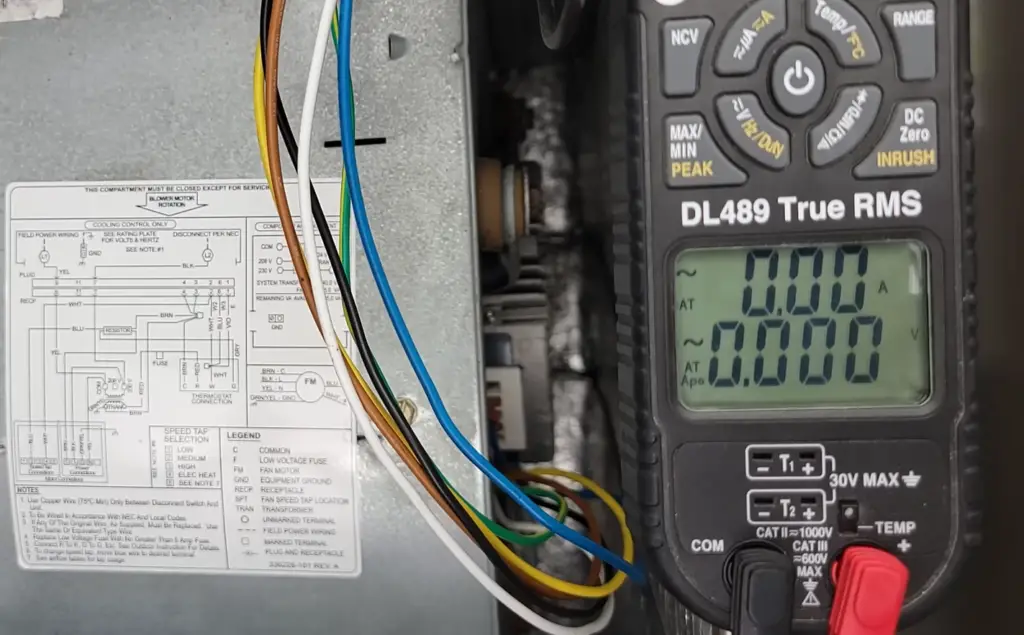
Constant Speed ECMs
Constant Speed ECMs are designed to maintain a fixed speed regardless of changes in system resistance. These motors are commonly used in applications where maintaining a constant speed is crucial, such as in certain types of fans and blowers. Constant Speed ECMs provide a stable rotational speed, allowing for precise control and optimization of the system’s performance [2].
Advantages of ECM Motors:
- Energy Efficiency: ECMs are known for their high energy efficiency compared to traditional motors. They incorporate advanced control algorithms and variable speed capabilities, allowing them to operate at optimal efficiency levels. This translates into significant energy savings and reduced operating costs over time;
- Precise Control: ECMs offer precise control over motor speed, torque, and airflow. Their ability to adjust these parameters in real-time enables fine-tuning of system performance and responsiveness to changing conditions. This level of control leads to improved overall system efficiency and better performance;
- Reduced Noise and Vibration: ECMs operate at lower speeds and can be programmed to minimize noise and vibration levels. This makes them ideal for applications where noise reduction is important, such as in HVAC systems used in residential and commercial buildings. The quieter operation of ECMs enhances comfort and reduces noise pollution;
- Extended Motor Life: The advanced control features of ECMs help to extend the motor’s lifespan. The ability to adjust speed and torque reduces stress on the motor components, resulting in less wear and tear. This leads to longer motor life and reduced maintenance requirements, contributing to overall cost savings;
Disadvantages of ECM Motors:
- Initial Cost: ECMs generally have a higher upfront cost compared to traditional motors. The advanced technology and control capabilities incorporated into ECMs contribute to their higher price. However, it’s important to consider the long-term energy savings and benefits when evaluating the overall cost-effectiveness of ECMs;
- Complexity: ECMs are more complex than traditional motors due to their electronic control systems. This complexity may require specialized knowledge and expertise for installation, maintenance, and troubleshooting. It is crucial to have trained technicians who are familiar with ECMs to ensure proper operation and avoid potential issues;
- Sensitivity to Electrical Noise: ECMs can be more sensitive to electrical noise and power quality issues compared to traditional motors. Electrical disturbances, such as voltage spikes or harmonics, can affect the performance and reliability of ECMs. Proper electrical protection measures, such as surge suppressors and power conditioning equipment, may be necessary to mitigate these risks;
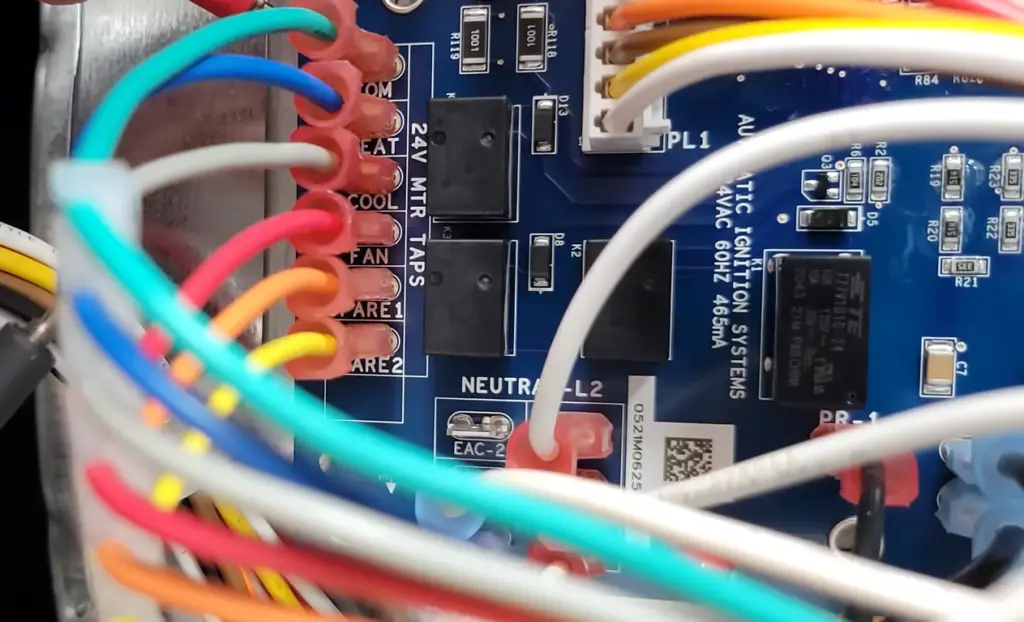
Do ECM Motors Use Capacitors?
ECM motors often utilize capacitors as part of their operation. Capacitors play a crucial role in the functioning of ECM motors by assisting with the motor’s starting and running processes.
In ECM motors, capacitors are commonly used in conjunction with the motor’s electronic control system to provide additional power during motor startup. This extra power helps overcome the initial inertia and allows the motor to reach its operating speed quickly and efficiently. By providing this boost of power, capacitors enable ECM motors to start smoothly and minimize any potential strain on the motor and associated components.
Furthermore, capacitors are also employed to improve the power factor of ECM motors. Power factor is a measure of the efficiency of electrical power usage in a motor. By adding capacitors to the motor circuit, power factor correction can be achieved, leading to better electrical efficiency and reducing the overall energy consumption of the motor.
Some ECM motors may utilize other methods, such as advanced control algorithms and power electronics, to achieve motor starting and running functions without the need for capacitors.
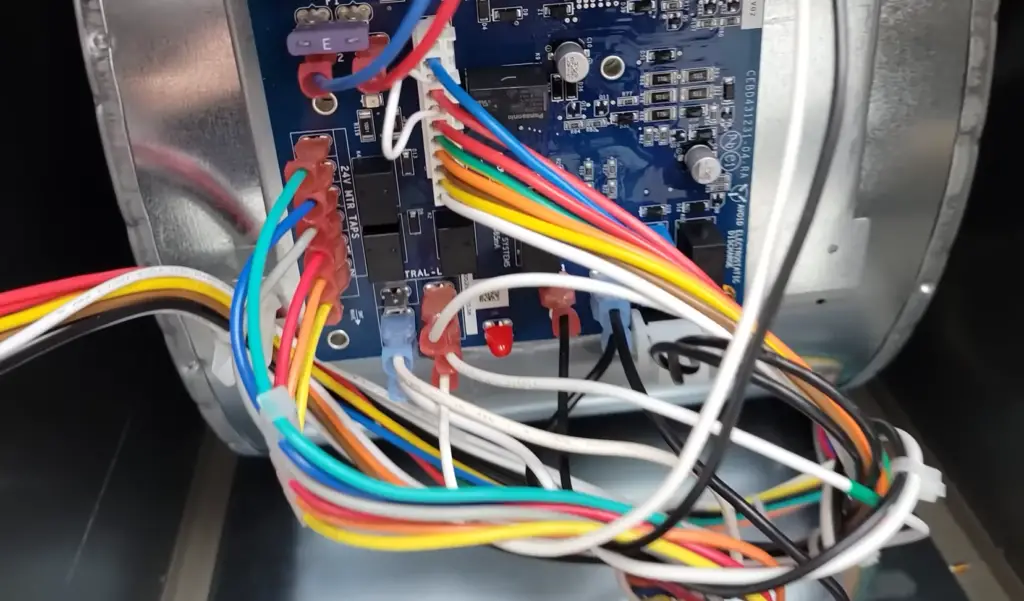
What Is the Difference Between a PSC Motor and an ECM Motor:
When it comes to electric motors, two common types that are widely used in various applications are Permanent Split Capacitor (PSC) motors and Electronically Commutated Motors (ECM). While both motors serve similar purposes of converting electrical energy into mechanical energy, they differ significantly in terms of design, performance, efficiency, and application.
1) Design
- PSC motors have a relatively simple design. They consist of a run capacitor and a start winding connected to the stator, which creates a rotating magnetic field. PSC motors are typically single-speed motors, meaning they have a fixed rotational speed;
- ECM motors are more complex in design. They incorporate advanced electronics and a brushless DC motor design. ECM motors use a combination of permanent magnets, sensors, and electronic controls to regulate motor speed, torque, and airflow. They are capable of variable speed operation, allowing for precise control and optimization [3];
2) Torque Curve
- PSC motors have a relatively flat torque curve. They provide a constant torque output across their operating range. However, their torque output decreases as the motor speed decreases;
- ECM motors offer a more flexible torque curve. They can provide varying levels of torque depending on the motor speed and load conditions. ECM motors can deliver high torque at low speeds, making them suitable for applications that require a strong starting torque or precise control over torque output;
3) Reliability
- PSC motors are known for their simplicity and robustness. They have fewer electronic components, which can contribute to their overall reliability. PSC motors are commonly used in applications where a long service life is required, such as in refrigeration systems and household appliances;
- ECM motors are also reliable but may be slightly more prone to failure compared to PSC motors due to their complex electronic control systems. However, advancements in technology have improved the reliability of ECM motors over the years. Regular maintenance and proper installation can help ensure their long-term performance;
4) Efficiency
- PSC motors are relatively efficient but not as energy-efficient as ECM motors. They typically operate at a fixed speed and are less responsive to changes in load or system conditions. PSC motors have a lower overall efficiency when compared to ECM motors, especially at partial load conditions;
- ECM motors are highly efficient. Their ability to adjust speed, torque, and airflow based on real-time demands allows for optimal energy usage. ECM motors can significantly reduce energy consumption and operating costs compared to PSC motors, especially in applications with varying load requirements;
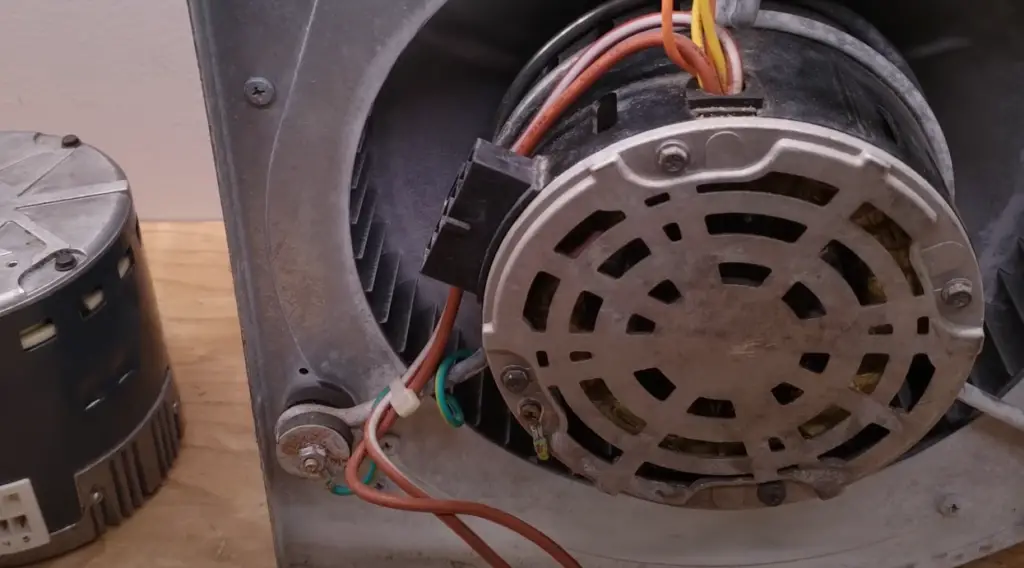
5) Dynamic Response
- PSC motors have a slower dynamic response due to their fixed speed operation. They may take longer to reach the desired speed or adjust to changes in load conditions. This slower response time can limit their suitability for applications that require rapid changes in motor speed or immediate response to varying loads;
- ECM motors offer a fast and precise dynamic response. Their variable speed capabilities enable quick adjustments to changes in load conditions. ECM motors can provide instant acceleration and deceleration, making them ideal for applications that require rapid changes in motor speed or precise control over airflow;
6) Noise
- PSC motors can generate moderate levels of noise during operation. The noise is mainly associated with the mechanical components and air movement within the motor. However, the noise level can vary depending on the specific design and application;
- ECM motors are generally quieter compared to PSC motors. The brushless design and advanced control algorithms help minimize vibrations and noise. ECM motors operate at lower speeds, reducing noise levels further. This makes them suitable for applications that require quieter operation, such as HVAC systems in residential or office environments;
7) Cost
- PSC motors are typically less expensive compared to ECM motors. Their simpler design and widespread availability contribute to their lower cost. PSC motors are a cost-effective option for applications that do not require advanced control capabilities or high energy efficiency;
- ECM motors have a higher upfront cost compared to PSC motors. The advanced electronics, variable speed capabilities, and improved energy efficiency contribute to their higher price. However, the long-term energy savings and performance benefits of ECM motors can outweigh the initial investment, especially in applications with varying load requirements;
8) Application
- PSC motors are commonly used in applications where a fixed speed is sufficient. They find widespread use in household appliances, refrigeration systems, fans, and pumps where a simple and reliable motor is required;
- ECM motors are ideal for applications that demand precise control, energy efficiency, and variable speed capabilities. They are commonly used in HVAC systems, industrial equipment, refrigeration units, and other applications where dynamic response, energy savings, and optimal performance are crucial;
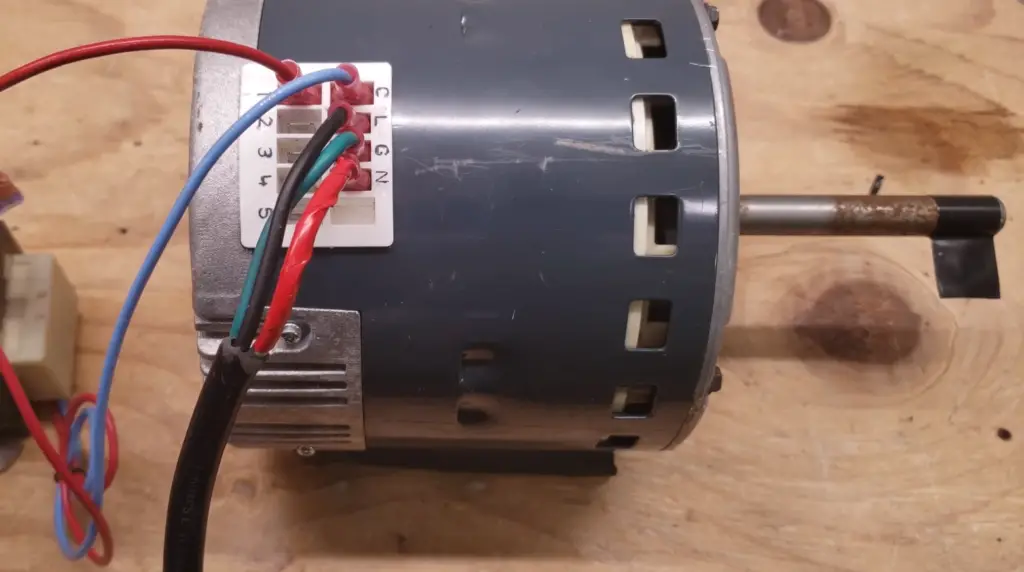
What Usually Fails on an ECM Motor:
- Use of Blower: ECM motors are commonly used in applications that involve blowers, such as HVAC systems. The blower assembly can affect the performance and reliability of the ECM motor. Improper installation or maintenance of the blower can lead to issues like excessive load on the motor, misalignment, or restricted airflow. These factors can put additional stress on the ECM motor, leading to premature failure;
- Electrical Surges: Electrical surges or voltage spikes are sudden increases in electrical voltage that can damage electronic components, including ECM motors. Surges can occur due to lightning strikes, power grid fluctuations, or faulty wiring. ECM motors are particularly sensitive to electrical surges because of their complex control electronics. Surge protection devices like surge suppressors and voltage regulators can help mitigate the risk of electrical surges damaging the ECM motor;
- Moisture: Moisture is a common enemy of electrical equipment, including ECM motors. Exposure to excessive moisture or water can lead to corrosion, short circuits, and insulation breakdown in the motor. Moisture can enter the motor through leaks, condensation, or improper installation in humid environments. Proper sealing, insulation, and regular maintenance can help protect ECM motors from moisture-related failures;
- Overheating: Overheating is a significant cause of ECM motor failures. High operating temperatures can degrade the motor’s insulation, lubrication, and electronic components, leading to reduced efficiency and premature failure. Overheating can occur due to inadequate ventilation, blocked airflow, or operating the motor beyond its recommended temperature limits. Regular inspection of cooling systems, proper ventilation, and adherence to the motor’s operating guidelines can help prevent overheating-related failures;
- Bearing Failure: Bearings play a critical role in the smooth operation of ECM motors. Over time, bearings can wear out due to continuous use, lack of lubrication, or contamination. Bearing failure can result in increased friction, noise, and motor imbalance. Regular lubrication, monitoring of bearing conditions, and timely replacement can help prevent bearing-related failures;
- Electronic Component Failure: ECM motors incorporate complex electronic control systems, including microcontrollers, sensors, and power electronics. These components can be susceptible to failure due to factors like manufacturing defects, age, electrical stress, or environmental factors. Electronic component failures can result in motor malfunctions, loss of control, or complete motor shutdown. Proper handling, regular maintenance, and monitoring of electronic components can help detect and address potential issues before they lead to motor failure [4];
FAQ:
1. Are ECM motors more efficient?
Yes, ECM motors are more efficient compared to traditional motors. ECM motors incorporate advanced control algorithms and variable speed capabilities, allowing them to operate at optimal efficiency levels.
They can adjust their speed, torque, and airflow based on real-time demands, resulting in reduced energy consumption and lower operating costs. The ability of ECM motors to match the motor’s output to the load requirements makes them highly efficient in a wide range of applications.
2. What does an ECM motor consist of?
An ECM motor consists of several components that work together to convert electrical energy into mechanical energy. The main components of an ECM motor include:
- Stator: The stator is the stationary part of the motor and consists of a series of windings that create a rotating magnetic field;
- Rotor: The rotor is the rotating part of the motor. In ECM motors, the rotor typically contains permanent magnets;
- Electronic Control Module: The electronic control module is the brain of the ECM motor. It includes microcontrollers, sensors, and electronic circuitry responsible for controlling motor speed, torque, and other parameters;
- Drive Electronics: The drive electronics convert the incoming AC power to the appropriate form for the motor’s operation. They regulate the power supply to the motor based on the signals received from the control module;
- Bearings: Bearings provide support and allow smooth rotation of the motor’s rotor;
- Housing: The motor housing encloses and protects the internal components of the ECM motor [5];
3. Do ECM motors have windings?
Yes, ECM motors have windings. The stator of an ECM motor consists of multiple windings that are responsible for creating a rotating magnetic field. However, ECM motors differ from traditional motors in terms of the winding configuration and control mechanisms. Instead of using a single set of windings for fixed-speed operation, ECM motors have advanced electronic control systems that regulate the power supplied to the windings, allowing for variable speed operation and precise control.
4. Does an ECM motor need a VFD?
No, ECM motors do not require a Variable Frequency Drive (VFD). Unlike some other types of motors, ECM motors have built-in electronics that control the motor speed and other parameters. This eliminates the need for external devices like VFDs to regulate motor speed. ECM motors can directly connect to the power supply without requiring additional control equipment.
5. Are ECM motors DC or AC?
ECM motors are typically AC (Alternating Current) motors. They are designed to operate on standard AC power supplies commonly found in residential, commercial, and industrial settings. However, ECM motors utilize advanced electronic control systems to convert the incoming AC power to the appropriate form for motor operation, allowing for variable speed control and enhanced efficiency.
6. Do ECM motors have brushes?
No, ECM motors are brushless. Unlike brushed motors that rely on mechanical brushes and commutators to transfer electrical current to the rotor, ECM motors use electronic commutation. This means that the switching of current between the stator windings and rotor magnets is done electronically, eliminating the need for brushes. The absence of brushes leads to reduced friction, improved reliability, and longer motor life.
7. Do ECM motors need starters?
No, ECM motors do not require starters. Traditional motors with high inrush current, such as induction motors, often require starters to limit the initial surge of current during motor startup. However, ECM motors incorporate electronic control systems that regulate motor startup, allowing them to start smoothly without the need for additional starter devices.
8. Do ECM motors need lubrication?
In general, ECM motors do not require lubrication. The bearings used in ECM motors are typically sealed and lubricated for the motor’s lifetime. However, it is essential to consult the manufacturer’s guidelines for specific maintenance requirements and lubrication recommendations for each ECM motor model.
9. Is an ECM motor constant torque?
ECM motors can provide constant torque or variable torque, depending on the application and control settings. They have the capability to adjust their torque output based on load requirements. In applications that demand constant torque, such as conveyor systems or pumps, ECM motors can maintain a steady torque output across their operating range.
10. Is an ECM motor the same as variable speed?
Yes, an ECM motor is a type of variable speed motor. ECM motors can adjust their speed and output torque to match the requirements of the load. The electronic control systems in ECM motors allow for precise control over the motor’s speed, making them highly adaptable to varying operating conditions.
11. What part of an ECM motor is the most prone to failure?
While the reliability of ECM motors has significantly improved over the years, electronic components are generally more prone to failure compared to mechanical components. Therefore, the electronic control module and associated circuitry within the ECM motor are typically the most susceptible to failure.
Issues like electrical surges, manufacturing defects, or improper handling can affect the functionality of the electronic components and potentially lead to motor failure. Regular maintenance, proper installation, and protection against electrical disturbances can help mitigate the risk of electronic component failures.
12. Are ECM motors thermally protected?
Yes, many ECM motors are equipped with built-in thermal protection mechanisms. These protection features monitor the motor’s temperature during operation and can automatically shut down the motor or reduce its speed if it exceeds safe temperature limits.
Thermal protection helps prevent motor overheating, which can lead to insulation breakdown, reduced efficiency, and potential damage to the motor. The specific thermal protection features can vary among different ECM motor models, so it is important to consult the manufacturer’s specifications for details.
13. Do all motors need a start capacitor?
No, not all motors require a start capacitor. Start capacitors are commonly used in single-phase induction motors to provide an extra boost of power during motor startup. This additional power helps overcome the initial inertia and enables the motor to reach its operating speed. However, ECM motors operate differently and typically do not require start capacitors. The advanced control mechanisms in ECM motors facilitate smooth startup without the need for external capacitors.
14. Are ECM motors brushless?
Yes, ECM motors are brushless motors. As mentioned earlier, ECM motors utilize electronic commutation instead of brushes and commutators. The absence of brushes eliminates the need for regular maintenance, reduces friction and wear, and improves the overall reliability of the motor [6].
15. Is an ECM motor a blower motor?
Yes, ECM motors are commonly used as blower motors in HVAC systems, air handling units, and other applications that involve moving air or gasses. The variable speed capabilities of ECM motors make them ideal for adjusting the airflow based on real-time demand, resulting in energy-efficient and precise control over the blower operation.
16. Does the ECM control the AC?
No, the ECM motor does not control the AC (Alternating Current) power supply. The electronic control module within the ECM motor manages the motor’s operation, speed, torque, and other parameters. However, the power supply to the ECM motor is typically provided by an external AC power source, which is separate from the ECM motor’s control system. The ECM motor’s control module regulates the power supplied to the motor based on the desired operating conditions.
Useful Video: Fast Easy ECM FAN MOTOR Troubleshooting! ECM Blower Motors with Spade Terminals!
References
- https://www.electronicstalk.org/do-ecm-motors-have-capacitors/
- https://www.freedomhvacal.com/blog-psc-and-ecm-motors/
- https://www.regalrexnord.com/regal-rexnord-insights/psc-motors-ecm-motors
- https://mechanicaljungle.com/what-is-an-ecm-motor/
- https://blog.cpsgrp.com/engvt/advantages-of-ecm-motors-in-commercial-hvac-systems
- https://www.thomasnet.com/articles/machinery-tools-supplies/emc-motors-vs-psc-motors/











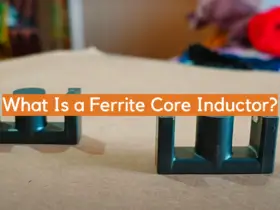
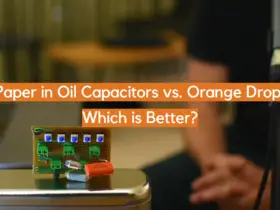
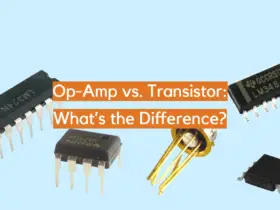
Leave a Reply